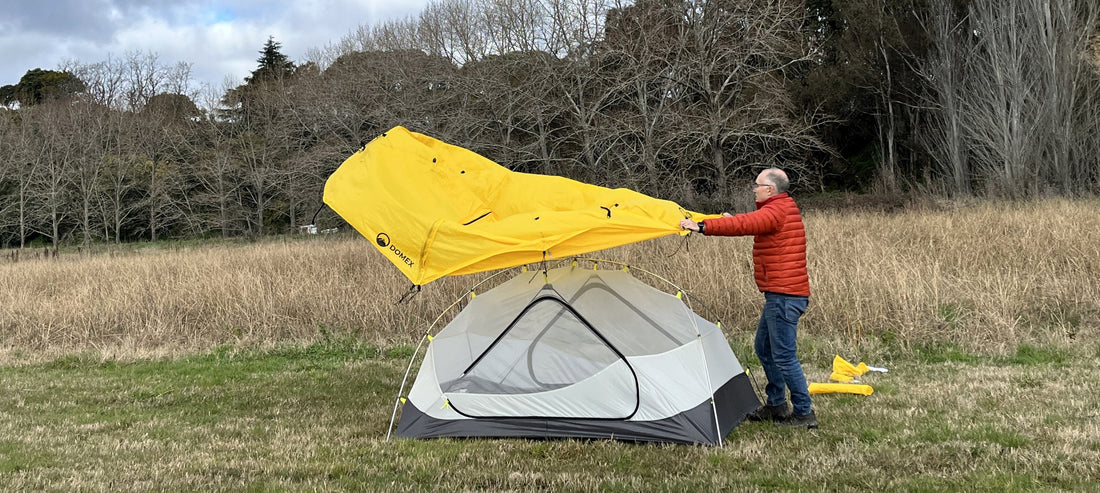
High stakes, poles, and rainfly - How to pitch your tent in the wind
Share
Top Tips for Battling the Breeze
Are you even camping if you haven’t wrestled with howling winds at least once? Anyone who’s spent a night outdoors knows the struggle, especially above the treeline, where even a minor gust can feel like a full-blown storm.
Setting up camp in strong winds can be frustrating, but with the right approach, you can get your tent up and secured without it turning into an impromptu kite.
1. Pick your spot wisely
A good campsite makes all the difference. Look for natural windbreaks like trees, large rocks, or even small hills. When laying out your tent, position the narrowest side into the wind to reduce resistance.
2. Weigh it down
Here’s a great excuse for overpacking! Once you’ve pulled your tent out of its bag, use heavy gear (like your pack, water bottles, or even a few rocks) to anchor it down. This will stop it from taking off before you’ve had a chance to peg it out.
3. Stay organised
Assemble your tent poles first, before you even unfold the tent. The last thing you want is to be chasing a flapping mess around in the wind. Having the poles ready to go will make setup quicker and easier.
4. Secure the stakes
Grab two tent pegs and anchor the side facing the wind first. Let the wind help you by blowing the rest of the tent away from you, making it easier to stretch and secure. You can set up your tent footprint after this step.
5. Work with the wind
Once the tent is partly staked, lay the poles over the top to hold it down. Insert the poles into their grommets, starting with the windward side, and then clip the tent onto the frame. If conditions are really rough, chuck some heavy gear inside to weigh it down further.
6. Rainfly strategy
Solo campers, this one’s for you! Instead of fighting the wind, let it work for you. Hold the rainfly from the side facing the wind, and let the breeze lift it over your tent. Move quickly to clip it down before the conditions take over.
7. Use your guy ropes
Guy ropes aren’t just for show—they add crucial stability, preventing excessive flapping and reducing strain on the tent fabric. A properly secured tent is not only sturdier but also quieter, so you won’t be kept awake all night by the sound of fabric whipping in the wind.
Good luck out there. May your tent stay put, and your sleep be uninterrupted.
